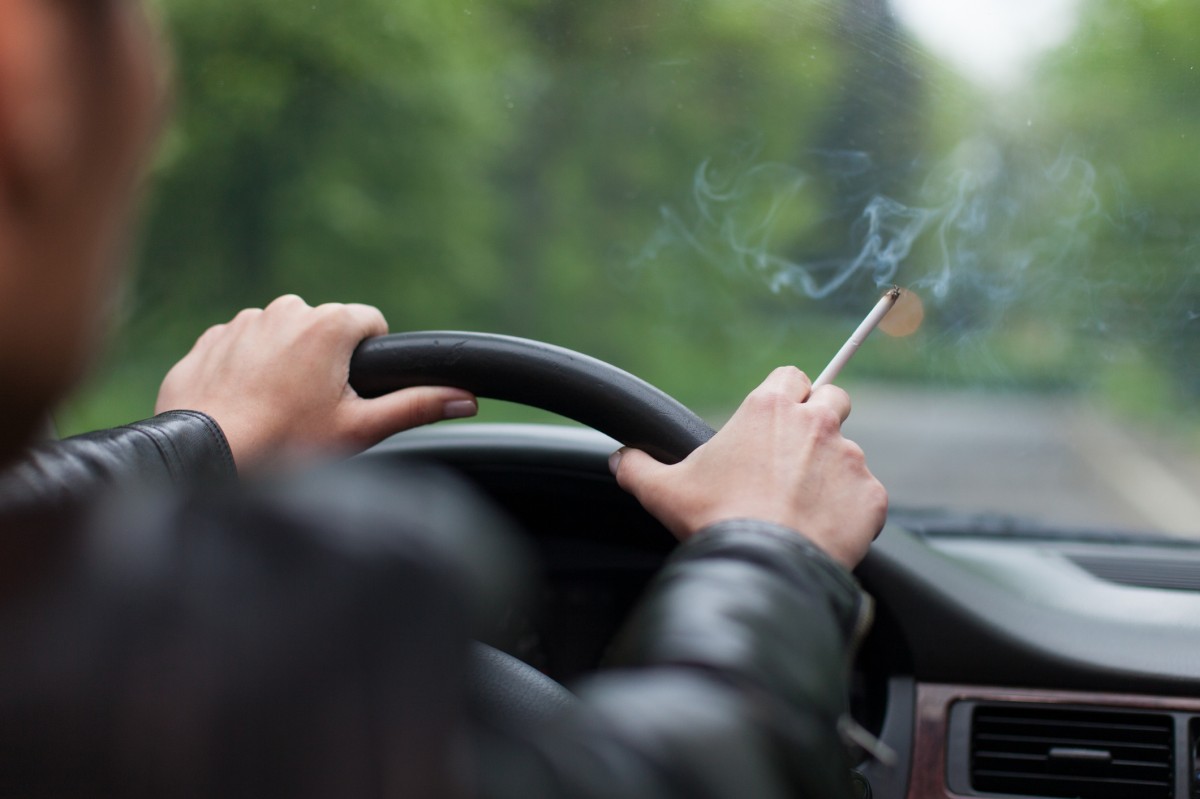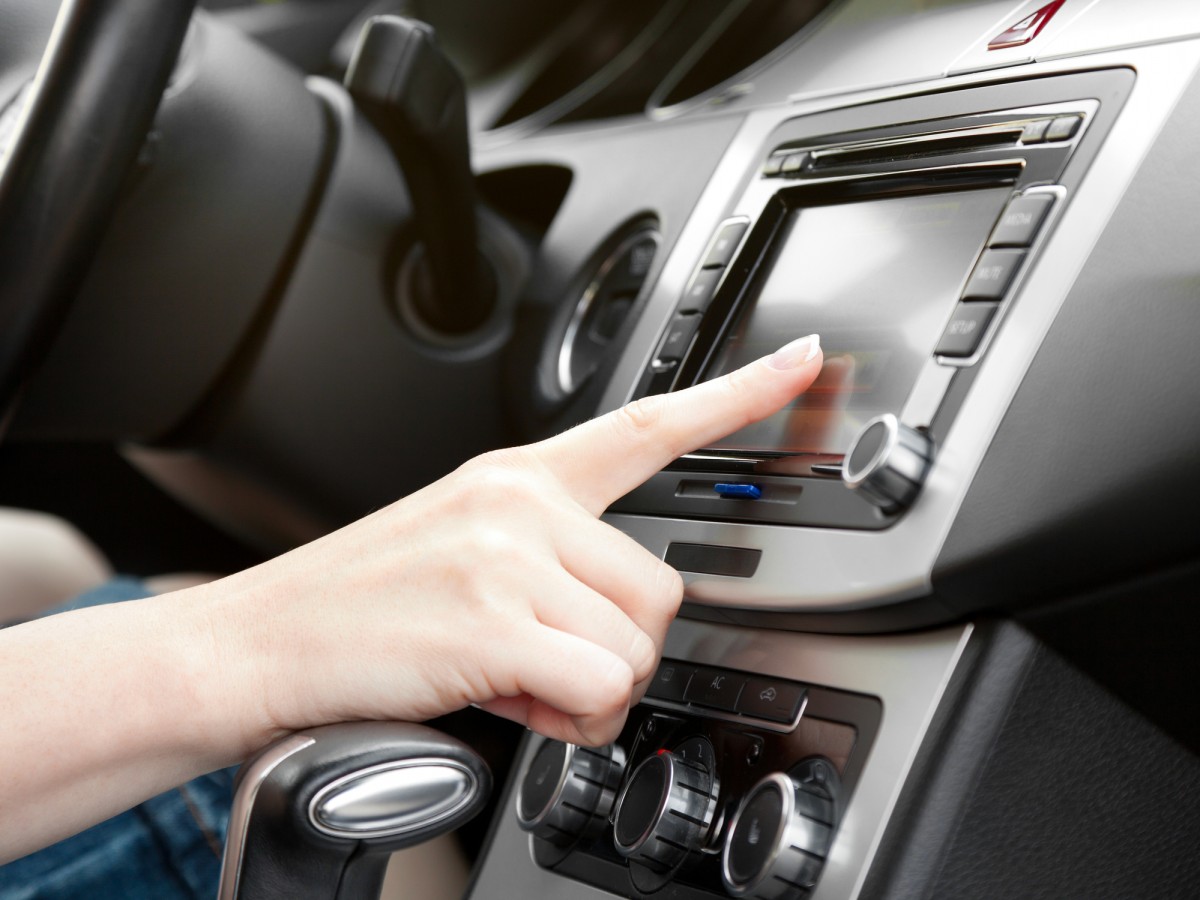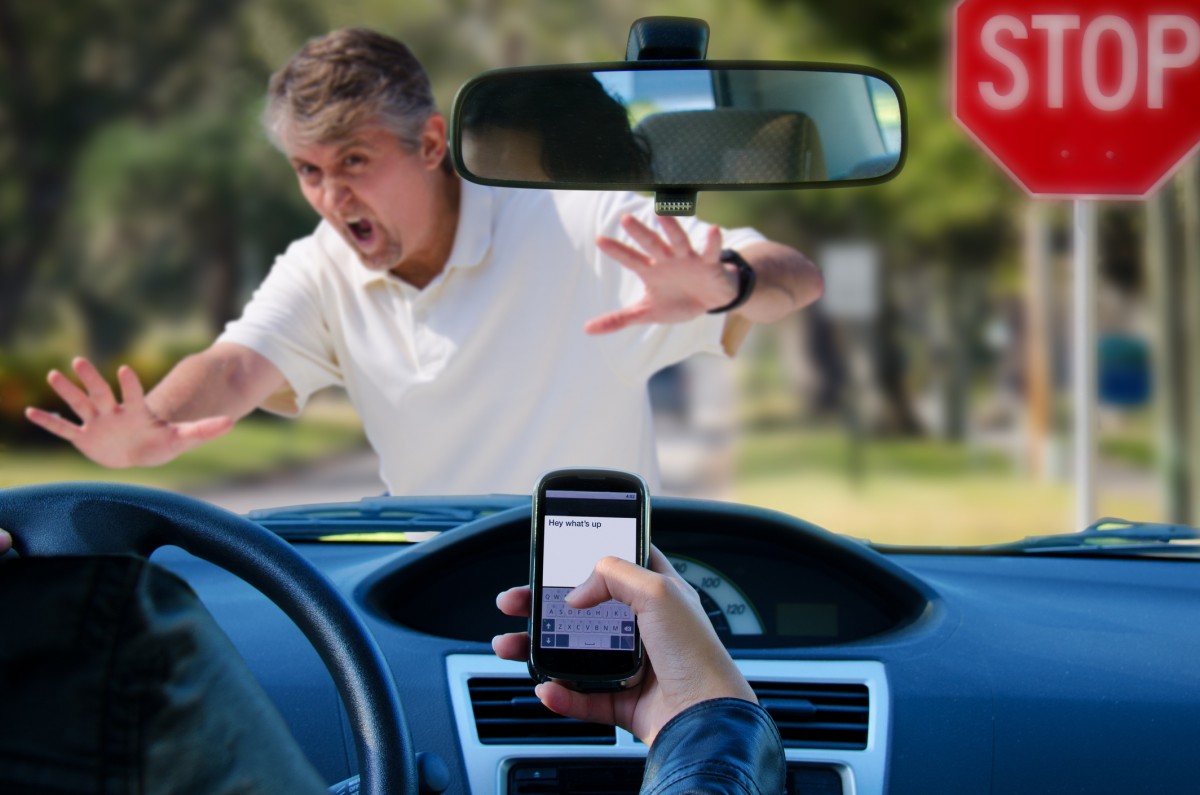Is it a problem or an epidemic? The National Highway Traffic Safety Administration (NHTSA) reports that distracted driving is the cause of approximately one-tenth of automobile crashes ending in fatalities. According to the Centers for Disease Control and Prevention (CDC), nine people lose their lives, and 1,000 are injured daily from this situation; in 2016 that translated into 3450 lives. What constitutes distracted driving? Any activity that takes away from focusing on safe driving; whether it’s texting, speaking on the phone or to someone in the car, grooming, eating and drinking, tinkering with the sound, navigation or entertainment systems.
Distractions fall into three groups, and here are some activities that qualify under each:
1. Visual - taking your eyes off the road
- Texting*
- Looking at directions on the GPS or the mirror
- Trying to find something
- Adjusting the temperature in the car or the volume on the stereo
- Switching stations
- Manual - taking your hands off the wheel
- Texting*
- Eating or drinking
- Grooming
- Lighting a cigarette
- Adjusting a child’s seatbelt
- Tending to a pet
- Cognitive - taking your mind off of driving
- Texting*
- Speaking to a passenger in the car
- Getting lost in ideas, problems, projects
- Drowsiness
*Texting involves all three functions, making it the most dangerous the number one contributor for distracted driver accident, which is why many states have made it illegal. Read our article on the dangers of texting and driving here. By June 2017 texting while driving was banned in 46 States plus D.C., while in 16 States plus D.C hand-held phones were forbidden.
Another activity that involves more than one function is speaking to passenger:
- 5 percent of drivers involved in crashes were talking to or looking at a passenger.
- Teen drivers transporting siblings are problematic. According to the National Safety Council “For the first six months after teens get their license, our new teen drivers shouldn’t have ANY young passengers. If your teen (and you) can hold off on having young passengers for at least a year, they will be even safer.”
Sleep deprivation is another major contributor to accidents. The Centers for Disease Control & Prevention estimate that 35% of adults in the U.S. sleep less than 7 hours, including the 12% who reportedly sleep less than 5 hours. A study by AAA Foundation for Traffic Safety reports that towed vehicles with drowsy drivers at the wheel amount for 7% of all crashes and 13% of accidents requiring hospital admissions. The risk factor of driving with less than 5 hours of sleep is similar to that of someone drunk.
The 10 Most Dangerous Driving Distractions
10. Smoking

In 1 percent of the fatal accidents, one of the drivers was smoking, lighting up or ashing their cigarette. Smoking takes at least one of your hands off of the wheel and removes your eyes from the road when ashing or lighting a cigarette. All of this can be very dangerous.
9. Physical Moving Objects, Including Pets and clutter.

1 percent of the police reports analyzed listed moving objects as the distraction causing the accident. This can be an over-excited dog, a bee flying through an open window, a drink falling out of the cup holder, etc. These objects can severely distract a driver, who may panic or reach out to grab whatever is moving.
8. Use of Car Gadgets

Another 1 percent of fatal distractions involved fiddling with car parts such as mirrors, seats, or built-in navigation systems. This is why it is very important to adjust your seat and mirrors before you even start your vehicle. Also, set up your navigation system before you start driving. If you get lost and need to turn on the system during a drive, pull over and do it.
7. Adjusting Climate or Audio

2 percent of drivers admitted that the accident that caused a fatality was because of them adjusting the volume of their audio or another similar distraction. Adjust your radio to the station and volume you want before you start driving. Also, set your A/C or heater to a temperature with which you are comfortable. If you need to adjust the audio or temperature while driving, ask a passenger to do so for you. If driving alone, wait until your car is stopped at a light or stop sign, or pull over.
6. Eating or Drinking

Another 2 percent of drivers were eating or drinking when they caused a fatal accident. Never eat a meal while driving! Only use the drive-thru if you are going to a rest area or other location to eat. Otherwise, go inside and eat. The time you would save by eating while driving is not worth your life or the life of others around you.
5. Use of Portable Devices

The most common items reached for by another 2 percent of drivers were a GPS or headphones. Other common items may include the aux cord. Taking a hand off of the wheel can cause an accident, and it is very possible that you will have to look away from the road to find the device.
4. Passengers

5 percent of drivers involved in these crashes were talking to or looking at a passenger. Try not to have any distracting conversations, and never take your eyes off the road to look at someone else in your car.
3. Rubbernecking

Rubbernecking is when a wreck or other distraction is happening outside of the vehicle, and the driver turns their head to watch the drama. 7 percent of the accidents were caused by this. It can be tempting to watch, but avoiding watching the cleanup after a wreck can keep you from having a wreck of your own.
2. Cell Phones

Using your cell phone while driving is incredibly dangerous. Drivers using their cell phone for talking or texting accounted for 12 percent of the distracted drivers. Texting is the number one worst way to use your cell phone while driving, which is why many states have passed laws making it illegal. Read our article on the dangers of texting and driving here.
1. Daydreaming - Mind on Automatic

Have you ever gotten home and realized you had zoned out while driving and don't remember certain sections of the journey? This type of driving counted for an astounding 62 percent of fatal accidents in the study. Make every effort to stay as alert as possible while driving. Even if you have driven a certain route for years, don’t trust yourself on autopilot. Keep your thoughts centered around driving.
How to Reduce Distractions While Driving
After reviewing some of the most common causes for distracted driving, think about how to contribute to a better driving experience for all. Breaking old habits requires willpower and persistence, but there is an excellent reward in adopting safer driving habits that will impact everyone.
Before the car moves:
Enter the destination in the GPS
Adjust mirrors and seat to make sure they’re comfortable
Tune the radio or streaming device
Make sure car seat is safely secured
Check to the pet who’s in its carrier
While on the road:
Focus on driving: the vehicles in front, behind and on the sides
If traveling with passengers, keep the conversation on the light side: stay away from stressful subjects
Don’t eat: take a snack before heading out
No use of phone: texting and chatting can wait until arriving at the destination
If unable to focus:
If signs of drowsiness or sleepiness become apparent, pull over and rest
Keep focused on driving, think about problems or plans at other times
Infinity Insurance can keep you from being distracted about not having car insurance. Click the following link to get a Free Auto Insurance Quote or give us a call at 1-800-INFINITY!
Infinity Insurance can keep you from being distracted about not having car insurance. Click the following link to get a Free Auto Insurance Quote or give us a call at 1-800-INFINITY!
The materials available in the Knowledge Center are for informational purposes only and not to provide legal advice. You should contact legal counsel to obtain information concerning any particular issue or problem. The use of this website and any of its links do not create representations or warranties of any kind, express or implied, about the completeness, accuracy, reliability, suitability or availability for the website or the information, products, services, or related graphics contained on the site for any purpose. Any reliance you place on such information is therefore strictly at your own risk.
